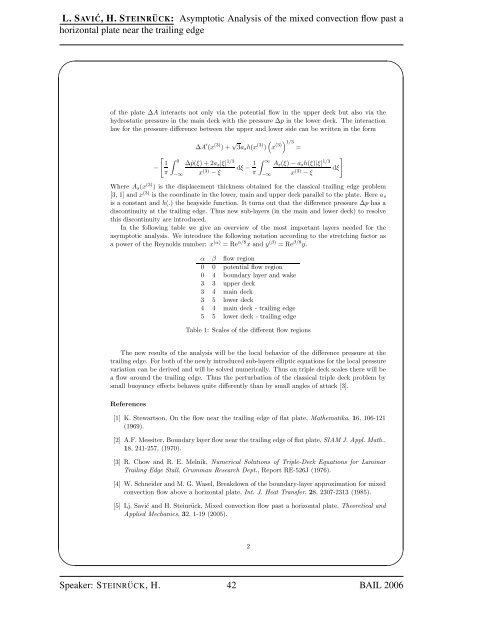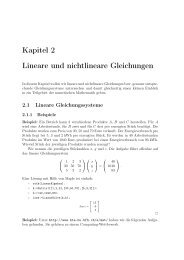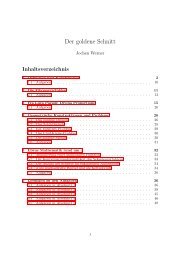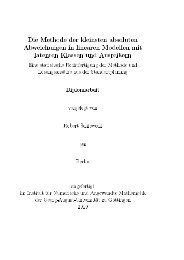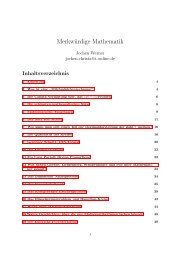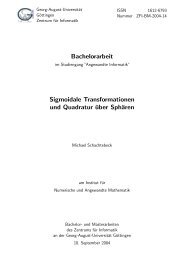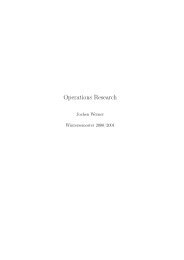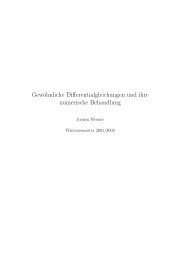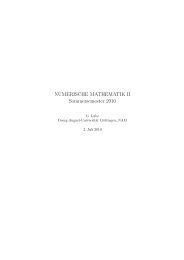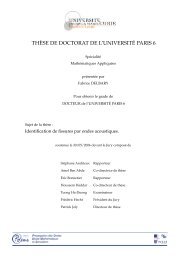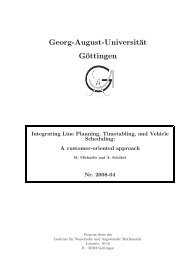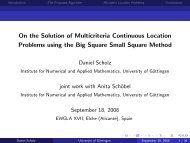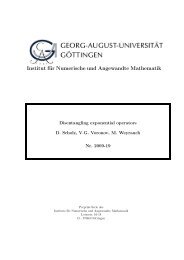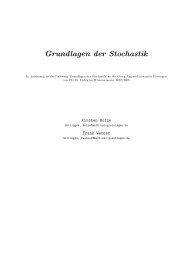BAIL 2006 Book of Abstracts - Institut für Numerische und ...
BAIL 2006 Book of Abstracts - Institut für Numerische und ...
BAIL 2006 Book of Abstracts - Institut für Numerische und ...
Create successful ePaper yourself
Turn your PDF publications into a flip-book with our unique Google optimized e-Paper software.
L. SAVIĆ, H. STEINRÜCK: Asymptotic Analysis <strong>of</strong> the mixed convection flow past a<br />
horizontal plate near the trailing edge<br />
✬<br />
✫<br />
<strong>of</strong> the plate ∆A interacts not only via the potential flow in the upper deck but also via the<br />
hydrostatic pressure in the main deck with the pressure ∆p in the lower deck. The interaction<br />
law for the pressure difference between the upper and lower side can be written in the form<br />
∆A ′ (x (3) ) + √ 3ash(x (3) �<br />
) x (3)� 1/3<br />
=<br />
� � 0 1 ∆ˆp(ξ) + 2as|ξ|<br />
−<br />
π −∞<br />
1/3<br />
x (3) dξ −<br />
− ξ<br />
1<br />
� ∞ As(ξ) − ash(ξ)|ξ|<br />
π −∞<br />
1/3<br />
x (3) �<br />
dξ<br />
− ξ<br />
Where As(x (3) ) is the displacement thickness obtained for the classical trailing edge problem<br />
[3, 1] and x (3) is the coordinate in the lower, main and upper deck parallel to the plate. Here as<br />
is a constant and h(.) the heayside function. It turns out that the difference pressure ∆p has a<br />
discontinuity at the trailing edge. Thus new sub-layers (in the main and lower deck) to resolve<br />
this discontinuity are introduced.<br />
In the following table we give an overview <strong>of</strong> the most important layers needed for the<br />
asymptotic analysis. We introduce the following notation according to the stretching factor as<br />
a power <strong>of</strong> the Reynolds number: x (α) = Re α/8 x and y (β) = Re β/8 y.<br />
α β flow region<br />
0 0 potential flow region<br />
0 4 bo<strong>und</strong>ary layer and wake<br />
3 3 upper deck<br />
3 4 main deck<br />
3 5 lower deck<br />
4 4 main deck - trailing edge<br />
5 5 lower deck - trailing edge<br />
Table 1: Scales <strong>of</strong> the different flow regions<br />
The new results <strong>of</strong> the analysis will be the local behavior <strong>of</strong> the difference pressure at the<br />
trailing edge. For both <strong>of</strong> the newly introduced sub-layers elliptic equations for the local pressure<br />
variation can be derived and will be solved numerically. Thus on triple deck scales there will be<br />
a flow aro<strong>und</strong> the trailing edge. Thus the perturbation <strong>of</strong> the classical triple deck problem by<br />
small buoyancy effects behaves quite differently than by small angles <strong>of</strong> attack [3].<br />
References<br />
[1] K. Stewartson, On the flow near the trailing edge <strong>of</strong> flat plate, Mathematika, 16, 106-121<br />
(1969).<br />
[2] A.F. Messiter, Bo<strong>und</strong>ary layer flow near the trailing edge <strong>of</strong> flat plate, SIAM J. Appl. Math.,<br />
18, 241-257, (1970).<br />
[3] R. Chow and R. E. Melnik, Numerical Solutions <strong>of</strong> Triple-Deck Equations for Laminar<br />
Trailing Edge Stall, Grumman Research Dept., Report RE-526J (1976).<br />
[4] W. Schneider and M. G. Wasel, Breakdown <strong>of</strong> the bo<strong>und</strong>ary-layer approximation for mixed<br />
convection flow above a horizontal plate, Int. J. Heat Transfer, 28, 2307-2313 (1985).<br />
[5] Lj. Savić and H. Steinrück, Mixed convection flow past a horizontal plate, Theoretical and<br />
Applied Mechanics, 32, 1-19 (2005).<br />
Speaker: STEINRÜCK, H. 42 <strong>BAIL</strong> <strong>2006</strong><br />
2<br />
✩<br />
✪


